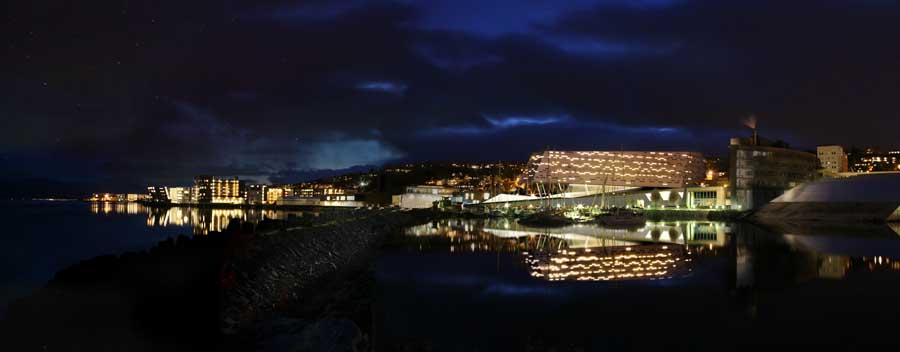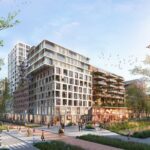Norway’s Banknotes Designed by Snohetta, Norway Architecture, Central Bank of Norway
Norway Banknotes Designed by Snøhetta
Central Bank of Norway monetary design
10 Oct 2014
Norway Banknotes – The Beauty of Boundaries Design
Design: Snøhetta, Architects
Norway’s Banknotes by Snohetta
Snøhetta and seven other designers were earlier this year invited to submit proposals for Norway’s new banknote design. All designs will be exhibited in Oslo this month, and the winning proposals were announced by The Central Bank of Norway during the exhibition opening last night.
The designs submitted by Snøhetta and The Metric System will each represent one side of the new banknotes – Snøhetta’s design will be the foundation for the backs, while The Metric System’s design will be the starting point for the fronts.
Snøhetta’s design is created upon the theme: The Beauty of Boundaries.
(Peter Richter, German physicist and chaos scientist, 1988)
Human beings settle nearby rivers, mountain chains, mountain passes, and coasts. We settle near boundaries – near the boundary between one element and the other. The beauty of boundaries is about the transition between sea and land, where something meaningful and interesting happens. Over time the sea becomes commonplace, just as land easily becomes so. However, where sea and land meet there is life. There is life in the same way as life on earth exists between sea and air, between land and air. Where water meets earth, soft meets hard, wet meets dry, life is created.
Our long coast has created our identity, our heritage, and our industries. It has created national and international transport opportunities, as well as the creation of our welfare society. It is a vivid meeting that creates life.
When contrasts come together, as when soft meets hard or digital meets analog, a dynamic is created. Our cubical pattern first of all represents pixels; our times visual language. Secondly, it represents mosaic; surface décor put together by different materials of different colors which together create a picture. The cubical pattern constructs the coast, the horizon, and the motive; just as we humans construct our societies on the coast.
Our organic pattern abstracts the sea. Seen in connection with the rational cubical pattern, it emphasizes the differences between the soft and the hard. Both patterns follow the Beaufort scale, as an expression of wind force, affecting the waves of the sea. On the 50 NOK note the wind is gentle, represented by short, cubical shapes and long, tame waves in the organic pattern. On the 1000 NOK note the wind is strong, expressed through sharp long shapes on the cubes and short waves.
The pattern and the abstracted motives create a horizon. The horizon is perhaps the most used dramaturgy for expressing border crossings. The nuances are tied together by the horizon and overlapping in the pattern. Just as our cost, the different banknotes are connected.
We have chosen black and white photos to enhance the colors of the cubical pattern, as well as to complement the Norwegian style and tone. The pictures contrast the rational system, and have motives with both direct and indirect storytelling. Our goal is to bring people into creating their own interpretations and associations. You will never know exactly what or how, but the design invites you into the beauty of boundaries – the transition between digital and analog, soft and hard – a dynamic that creates tension and life; just as the boundaries of our coast
Norway’s Banknotes Designed by information from Snøhetta
Location: Norway, northern Europe
Snohetta Norway Practice Information
Snohetta studio based in Oslo, Norway
Snohetta Architects : further information on this celebrated Norwegian architects studio

image : Placebo Effects
Architect office led by Kjetil Thorsen with Craig Dykers
Snohetta have an architects office in New York based at 50 Broad St
Architectural Design
Website: Oslo
Comments / photos for the Norway’s Banknotes Designed by Snøhetta page welcome
Norway’s Banknotes Designed by Snøhetta Architects, Oslo – page
Website: www.snoarc.no





